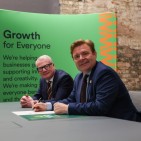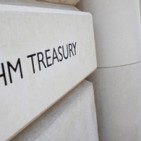Pakistan’s Independence Day
The Indo-Pak has remained a British colony from 1849 to 1947. The population did not approve of the British rule in India. A rebellion occurred in 1857, which shows attempts of the people in gaining their independence.
Muslims had ruled before the British and had suffered due to 1857 rebelling against the East India Company, and leaders such as Sir Syed Ahmed Khan and Syed Ameer Ali worked together for the Muslim people’s political progress.
The Indian National Conference was formed in 1885, later became British India’s largest political party. Muhammad Ali Jinnah was one of the members of the Indian National Congress and had worked towards the Hindu-Muslim union and India’s independence. On December 30 1906, The All India Muslim League was established, and there was a growing request for an independent Muslim state in India.
In 1930 Muhammad Iqbal presented an idea of a separate Muslim country, that would involve a majority of Muslims. The word Pakistan itself is a combination of two words Pak meaning Pure and Stan, meaning Land, a name created by Choudhary Rahmat Ali. In 1940, the Pakistan Resolution was announced in Lahore demanding greater Muslim autonomy in British India.
The Pakistan Program was led by Muhammad Ali Jinnah, resulting in creating a Muslim country. Pakistan received independence from the British reign on August 14, 1947. At its birth, Pakistan had two parts including East and West Pakistan. In 1971 East Pakistan parted way from West Pakistan, which became Bangladesh.
India’s Independence Day
In Meerut, the fight for India’s Independence began in 1857 with the Sepoy Uprising. In the 20th century, the Indian National Assembly and other political organisations, under the leadership of Mahatma Gandhi, launched a countrywide independence program. Foreign powers were transferred to India on August 15, 1947.
The Essential Assembly, to whose power was to be transferred, met to celebrate India’s independence on August 14, 1947, at 11 pm. India gained its freedom at midnight between August 14 and August 15, 1947. It was then India’s first prime minister Pandit Jawaharlal Nehru gave his famous speech “Tryst with Destiny”. People across India are recalled of the meaning of this event, and it is marked the start of a new period of deliverance from the British that took place in India for more than 200 years.
The sport of flying kites symbolises Independence Day. The skies are scattered with countless kites flown from the rooftops and fields to signify the free spirit of India. Kites of several styles, sizes and shades, including the tricolour, are available in the local stores. The Red Fort is also an essential symbol in India as part of Independence day, as it is where the Indian Prime Minister Jawahar Lal Nehru unveiled India’s flag on August 15, 1947.
Coca-Cola in Britain
One hundred and nineteen years ago, Coca-Cola was sold in Britain for the first time on 31st August 1900, and since then, people have been enjoying the soft drink. Many other companies were making similar products, and Coca-Cola wanted to make it easy to discriminate their product from plagiarism. They held a contest for the bottle companies to create the best bottle.
Indiana from the Root Glass Company of Terre Haute had won the competition. Their design was found in the dark by its different feel when held, and it was the same company that went into producing the famous bottle we all know of today. After Candler stopped neglecting the sales of the bottle and moved his focus away from soda fountains, the company boomed. In 1900 there were two bottling factories, but by 1920 there were roughly 1,000.
Fourteen years after the creation of the product, Coca-Cola made the trip across the Atlantic Ocean to Britain. Charles Candler, the son of Asa Griggs Candler, brought 5 gallons of the Coca-Cola syrup with him to London. By the 1920s, Coca-Cola was sold regularly in buildings, such as Selfridges and the London Coliseum. Coca-Cola is now the only product in the United Kingdom to ever had sales worth over £1 billion.
Tauseef Asif













